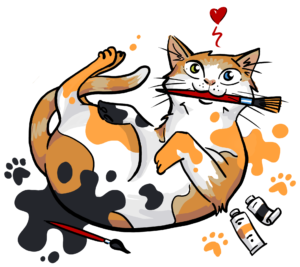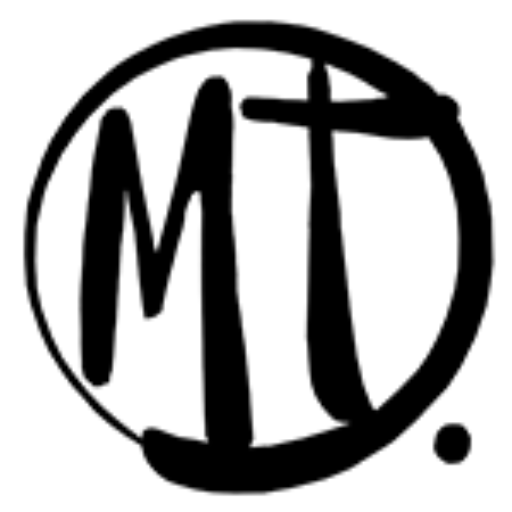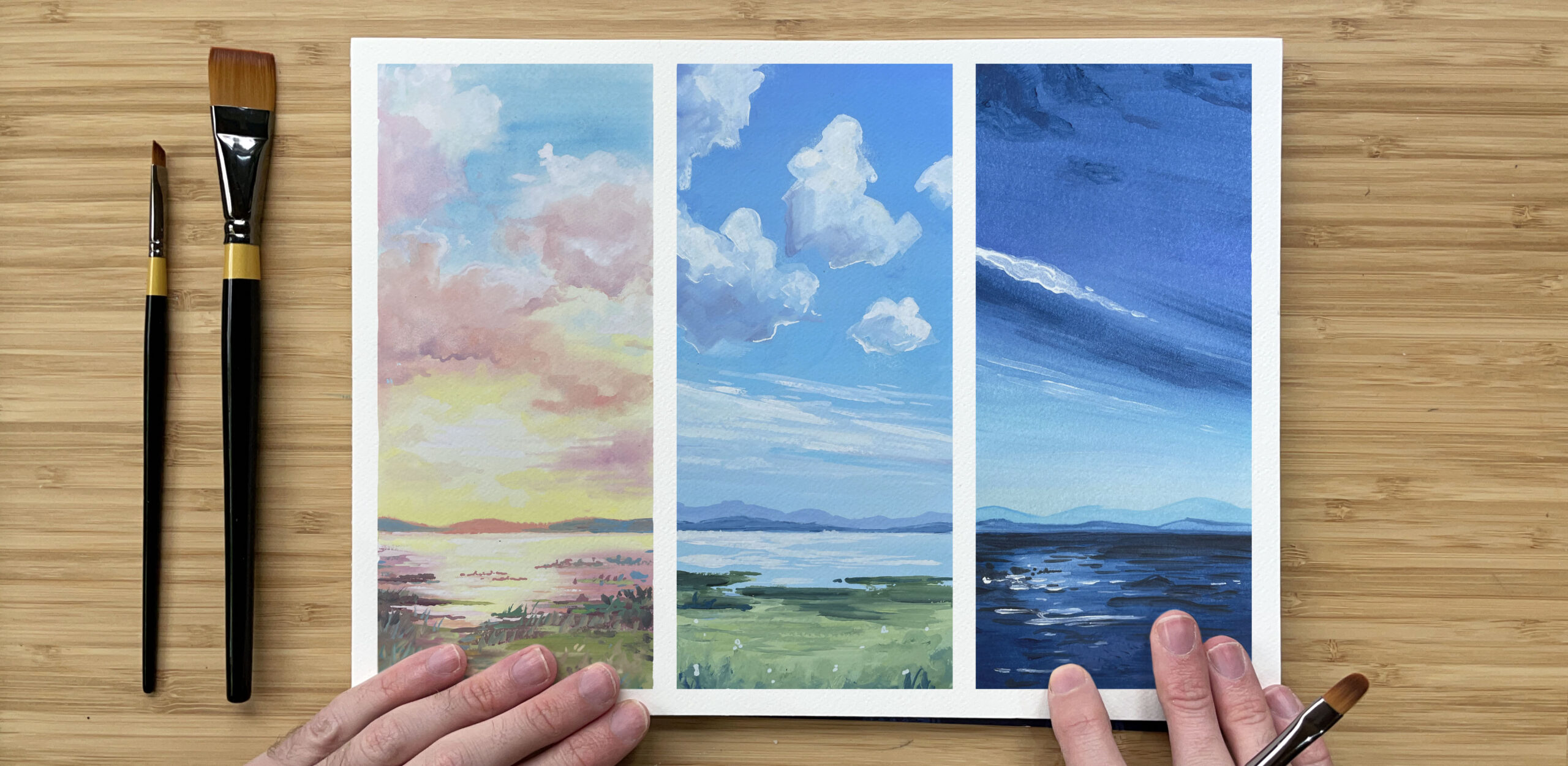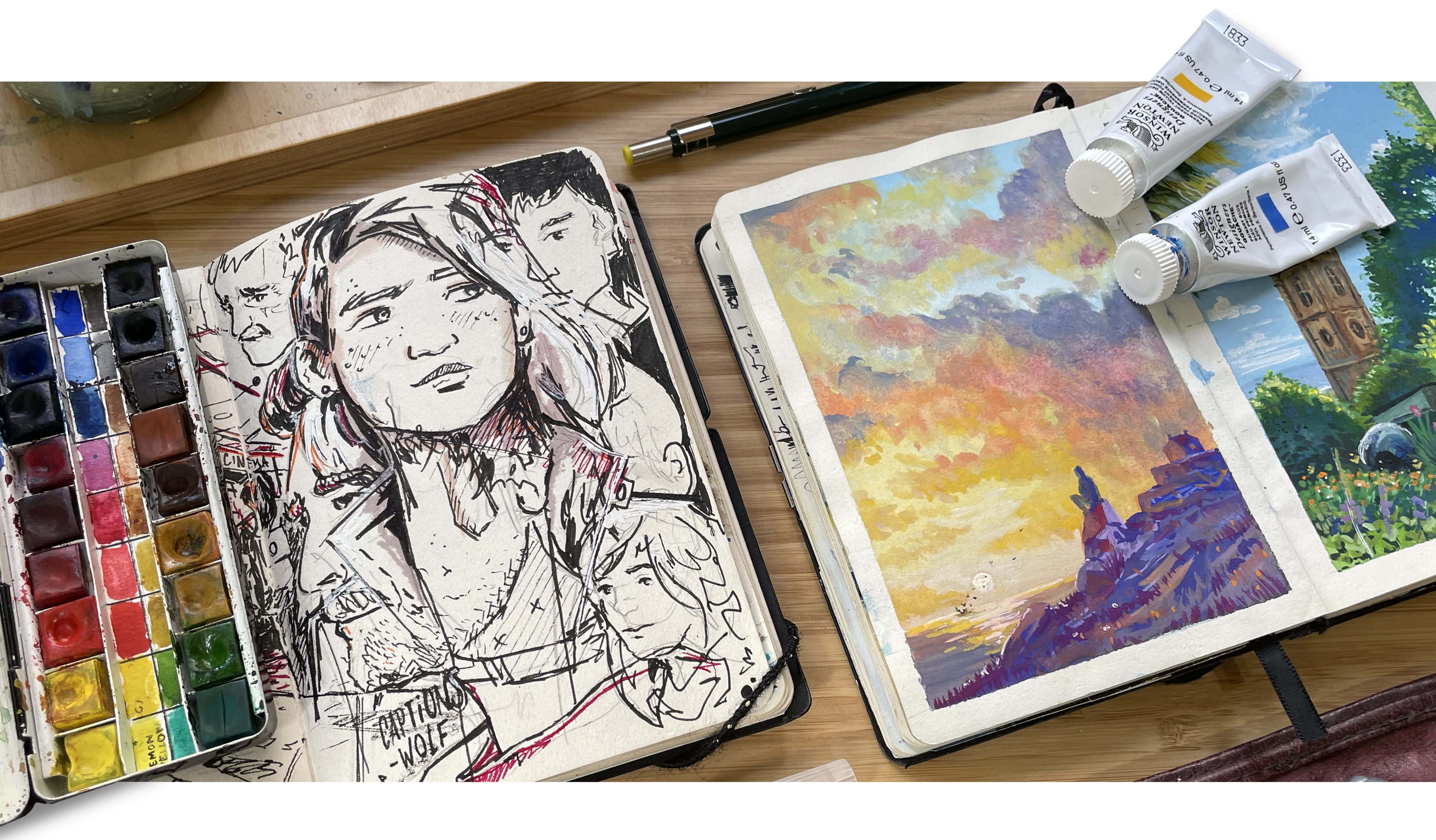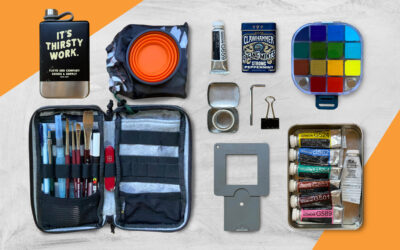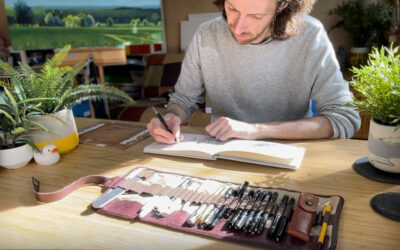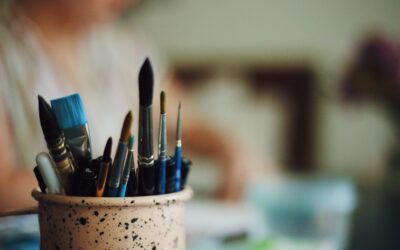As artists, sometimes we can’t help but want to try them all! And by “them”, I mean all the different mediums, paints and ways of creating. However between watercolour, gouache, and acrylic paint, where is the best place to start? So if you’ve ever been curious about the difference between these mediums, but aren’t too sure where to start, then keep on reading below! Also? how do you even pronounce ‘gouache’ anyway?
Watercolour, in it’s spontaneity lies the magic
When we describe paints as “water-based”, it means paints with some water mixed into their formula to make (or turn it) into a more fluid form. None of these are quite as thirsty for water as watercolour is but it’s a great place to start.
The unique trait of watercolour is its transparency. This means that good quality watercolour will be somewhat transparent or translucent. It’s why many watercolourists don’t use white paint, as the white of the paper acts as the substitute instead (so they dilute the paint with more water to increase its transparency).Something to note is that watercolour works best on more absorbent surfaces such as watercolour paper and due to the makeup of watercolour paint, it’s the least permanent out of the three paints.
Aesthetically, watercolour has the “softest” feel, as you can get some really smooth and natural blends from the water moving on the paper’s surface. This is why the best brushes to use with it are natural hair brushes, as the softer bristles won’t be ruined by watercolour paint and they’re capable of holding a lot more liquid.
Personally, I use watercolours to add a splash of life to my sketchbooks. They are easy to clean up which makes them convenient to travel with and quick to use. For example you can lay down a colour wash and doodle and sketch all over it. In fact, they are so handy that they come in 3 different forms: tube, pan, and stick! And while it might feel the most expensive out of the three (as good quality watercolour costs the most per millilitre), it balances out because a tiny bit goes a long way. If your art style leans towards a lighter feeling, then this is the medium for you.
Gouache, one syllable & rhymes with posh
Designers Gouache is the happy medium that sits somewhere between watercolour or acrylic. The best way to think of it is as an “opaque watercolour” made with chunkier pigments and binding gum.
If diluted with enough water, aesthetically you can still achieve a similar effect as you might with traditional watercolour, however if you apply it thickly or even straight out of the tube it will dry opaque. You can achieve beautifully sharp definition, vibrant colours and it’s also relatively convenient to travel with making it a popular option for Plein Air artists.
Something that throws a lot of fresh artists trying the medium for the first time is how you can rewet dried gouache paint. It allows you to use fun lifting techniques with it or if you’re me, you can cover mistakes and make minor edits on the fly! However, unlike acrylic paint, you may disturb the underlying layers if you add too much water. So it can be a forgiving medium once you are familiar with how it behaves however its patience is not limitless.
The upside is that you can use any kind of paint brush for gouache, as it washes off easily. Most gouache artists work on watercolour paper too, although the paint is quite content to used on other surfaces like wood or canvas (however it’s best to prep these surfaces with gesso beforehand). Price-wise, it tends to be more expensive than acrylic, but again, a tiny amount can go a very long way, so you’re not losing out.
If you have a more illustrative art style or even a more flexible style that likes to incorporate different things, then this is the medium for you! You can enjoy a little of the best of both worlds!
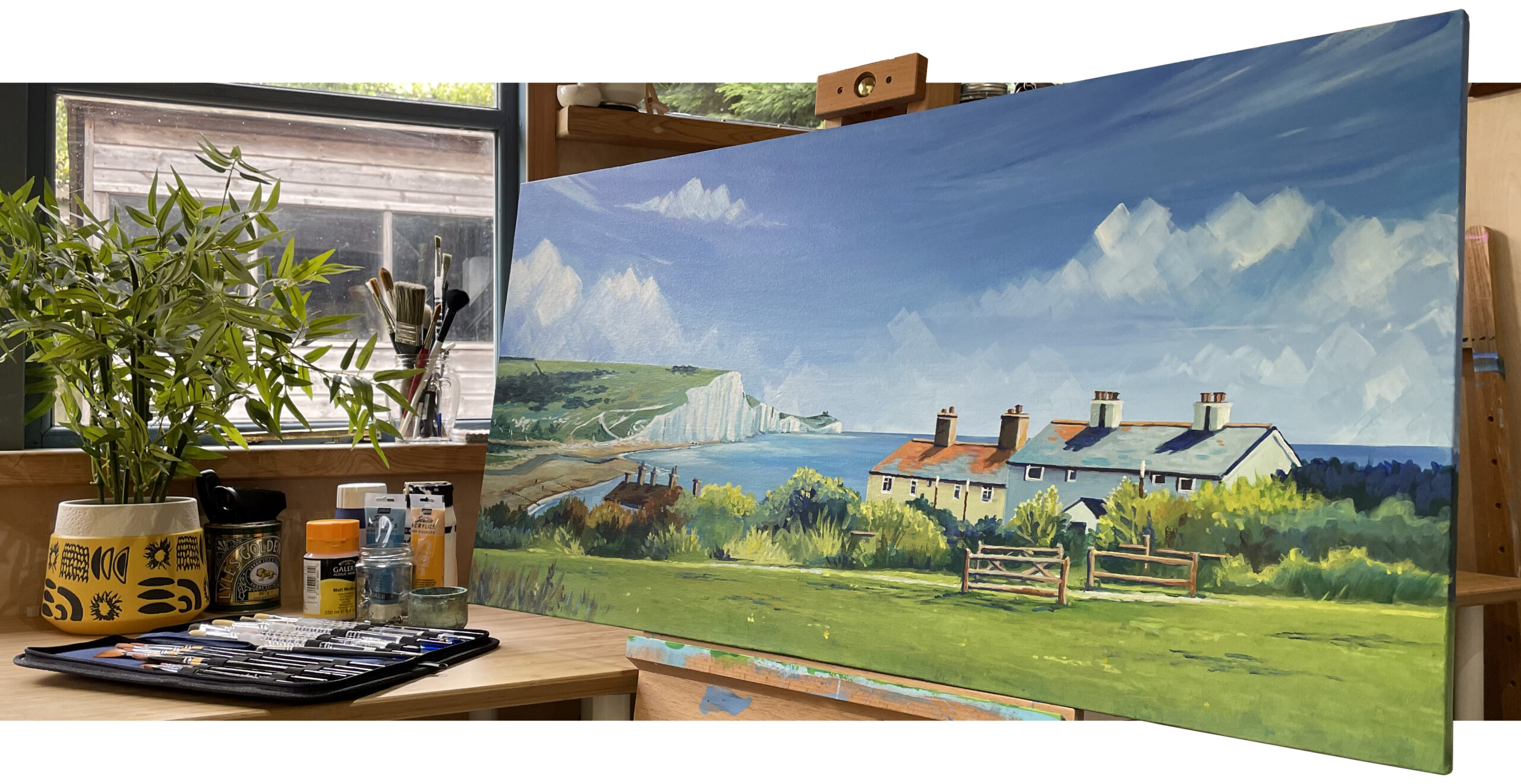
Fearless & Bold, Acrylic Paint
While it still shares some similarities with the other two paints, such as being water-soluble, the biggest difference is that it dries permanently. Even when super-diluted, it won’t come out once dry, which means you can easily paint over mistakes and layer your artwork up to your hearts content! It makes painting lighter colours on dark colours much simpler and is a very direct medium, where you place your colours is where they stay.. This also means that you can paint on almost any kind of surface, but most people use canvas or wood for more durability.
Out of the three paints it dries the fastest, and since underlying layers can’t move once set. It can be more difficult to get a smooth blend with acrylic than it is with watercolour or gouache paint but not impossible. The best type of brushes to use with acrylic are synthetic brushes, as the thicker paint will ruin the softer bristles of a natural hair paintbrush.
It can dry with a slightly “glossy” or even “plasticky” feel (hence the name “acrylic” paint). Although don’t be deterred by these traits – acrylic is one of the most affordable types of paint, so it’s an excellent choice for beginners and artists on any budget! You can use it to make wonderfully textured surfaces if you choose and ultimately, if your style loves the bright and bold as well as the weight of a thicker texture, acrylic is the medium for you.
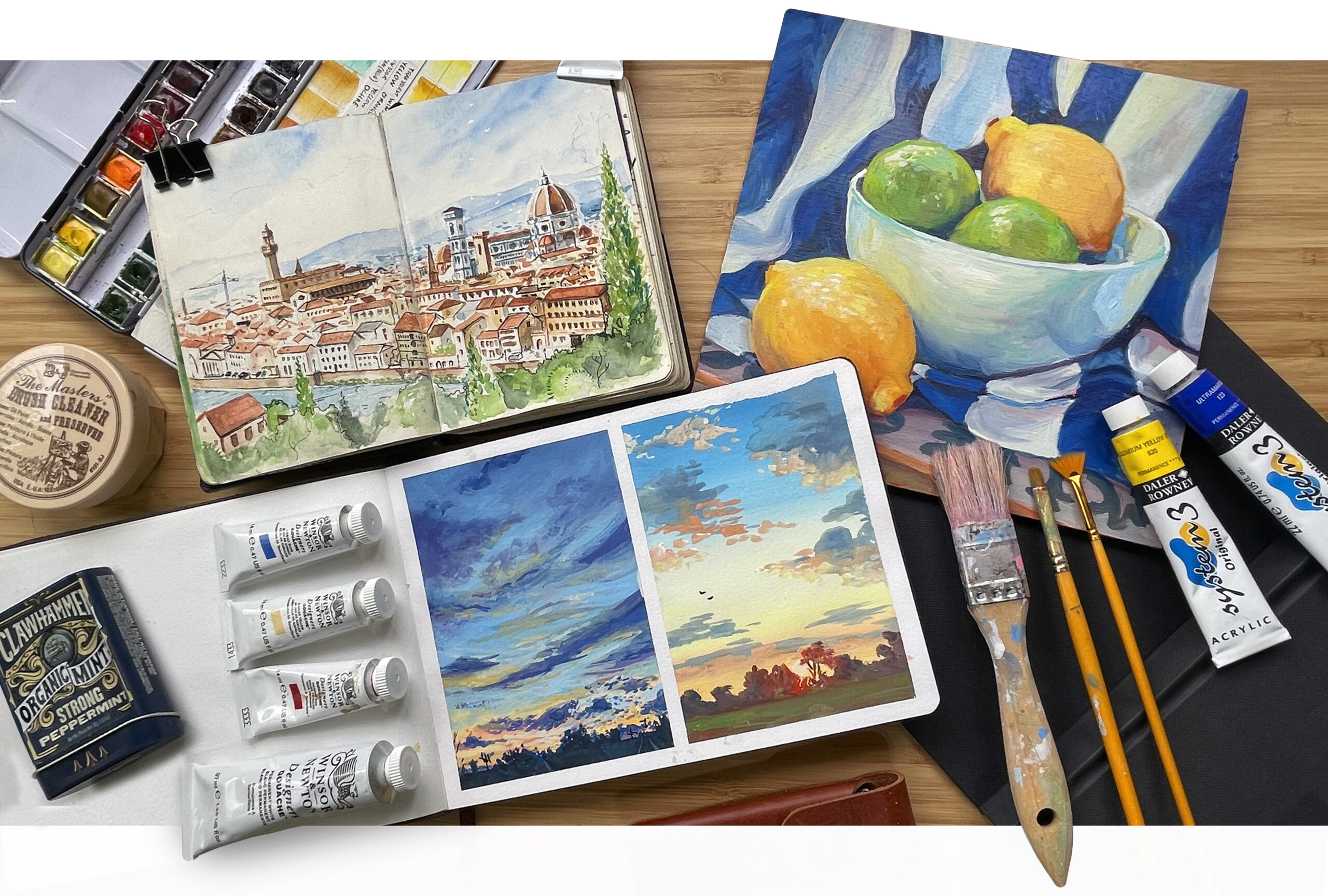
It’s a Knockout!
Or is it? Personally I learnt to paint with Acrylics by laying my artwork with thick paint and bold brushstrokes. Making mistakes isn’t such a problem when you can just cover them up! Watercolours taught me how to mix and layer my colours properly, filling my sketchbooks with vibrant splashes over my pen and ink scribbles. Then I fell in love with gouache and its buttery smooth finish and the bold colours drive me wild.
All have their strengths and we can employ each of them depending on what is best suited to what we want to create. As most art techniques are transferable across different paint media, each one can help develop your work as an artist. There is no better way than trying each one for yourself, however if you’re still unsure of which medium to use, start wherever appeals the most or select one frequently used by artists you would like to emulate in your own creative endeavours. There’s no teacher better than experience, so be fearless, grab your brushes and give one a go!
